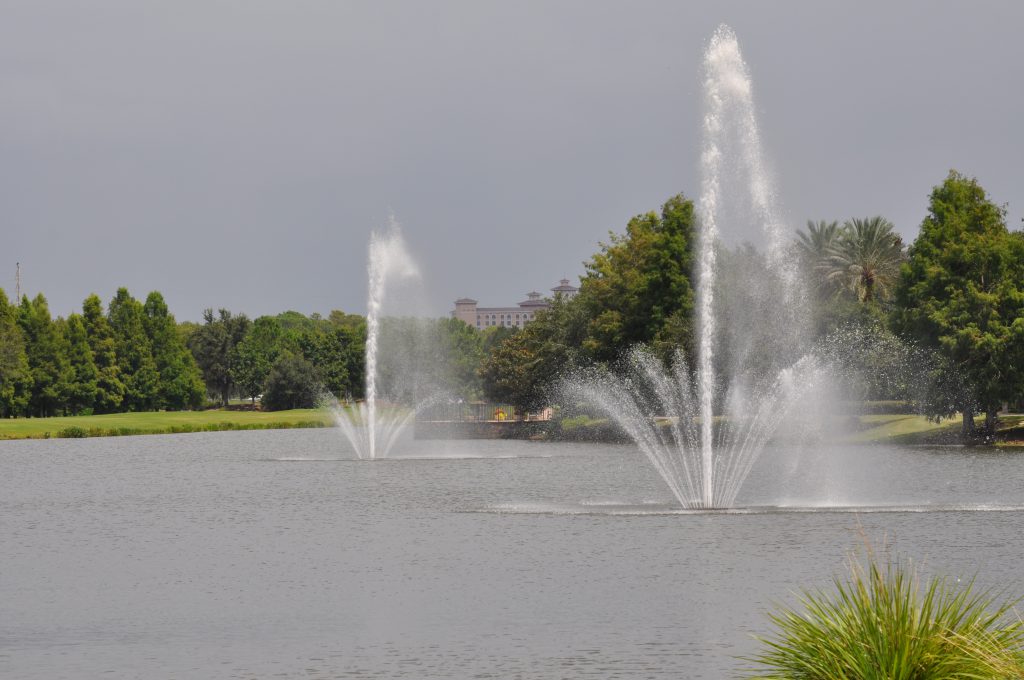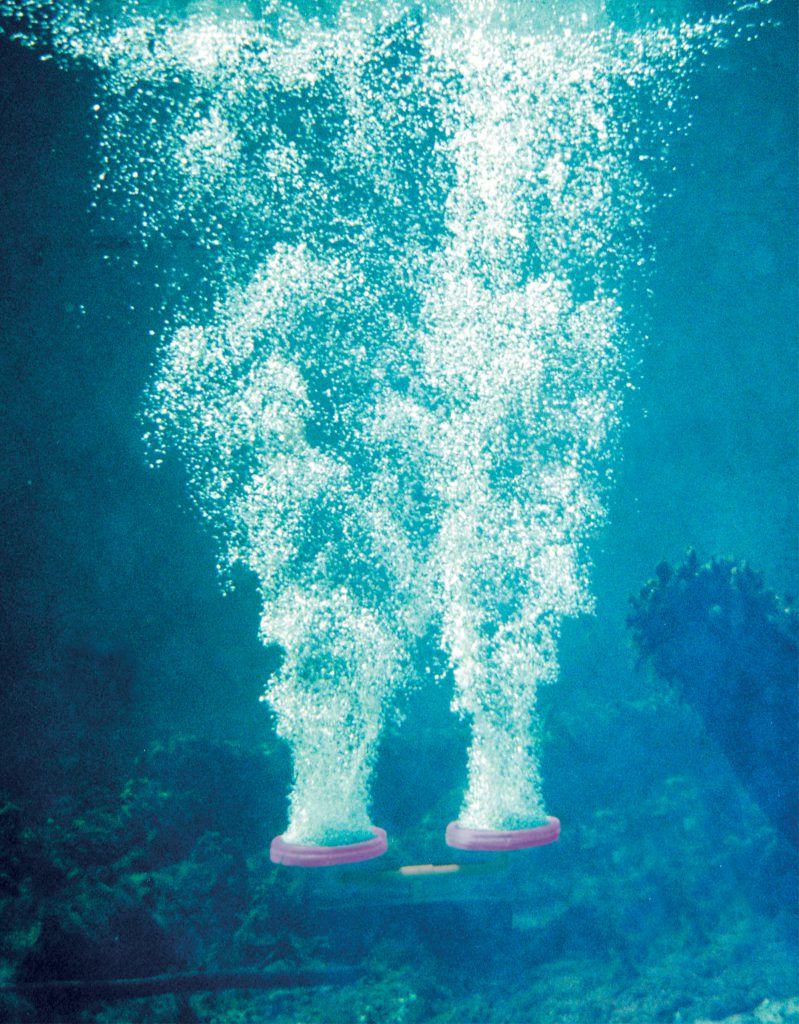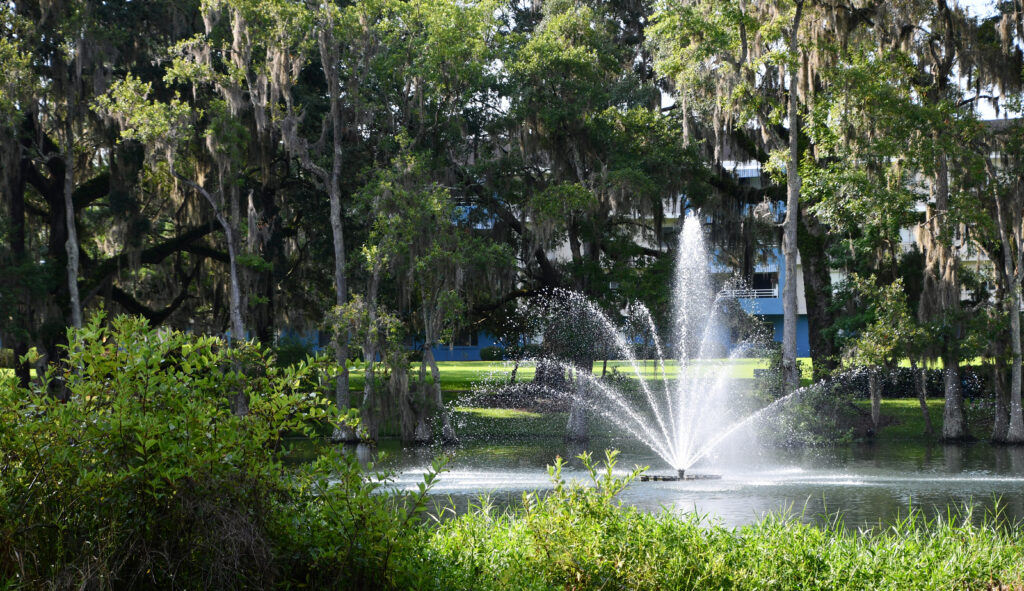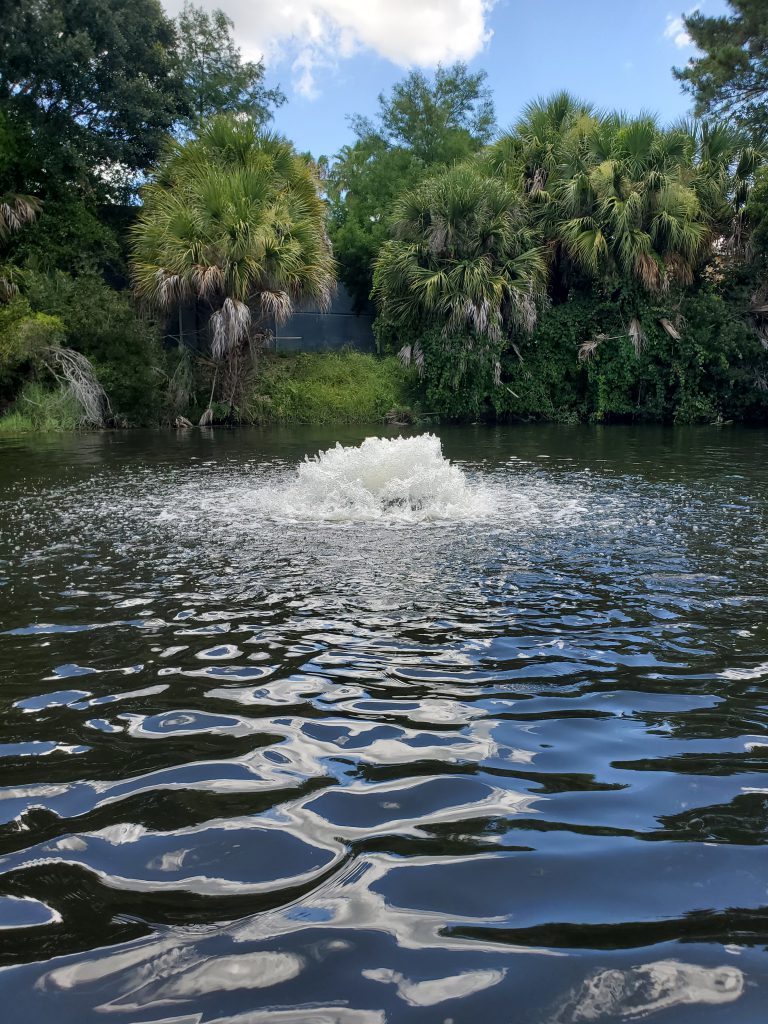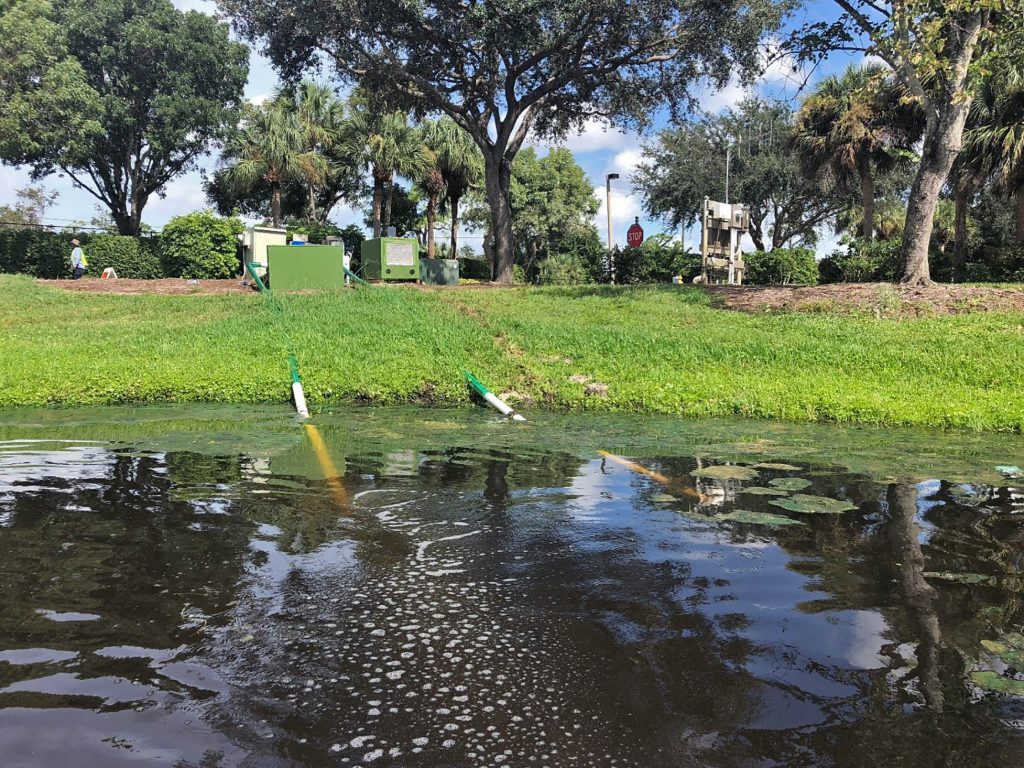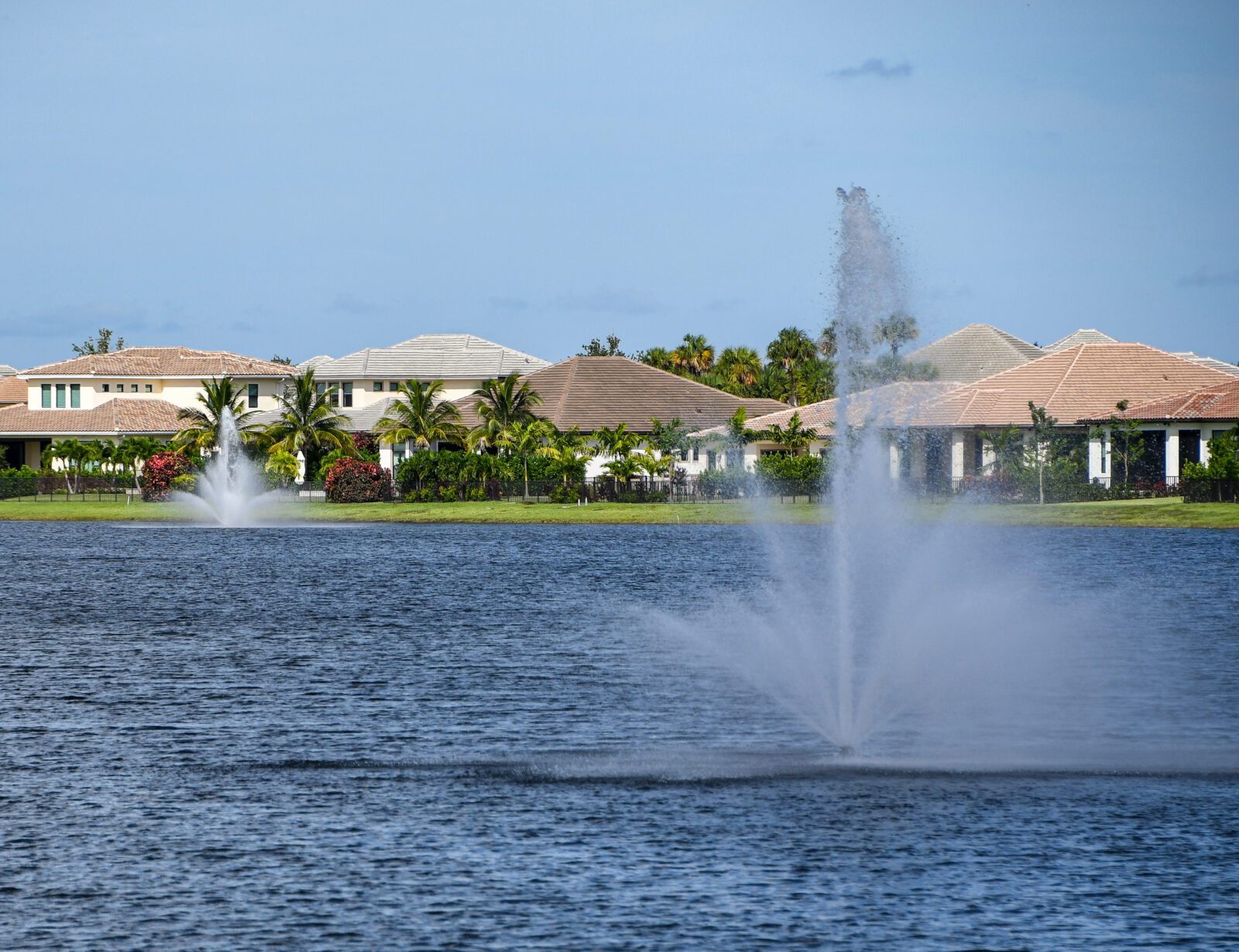
The Importance of Lake and Pond Aeration Systems
Choosing the correct aeration delivery system for your lake or pond is one of the most important decisions you will make for the long-term health and balance of your waterbody. Regardless of how big or small your waterbody is, the goal of an aeration system is to evenly spread an adequate amount of dissolved oxygen throughout the entire water column.
Lakes and ponds naturally receive dissolved oxygen from several sources, most notably plant respiration and atmospheric surface mixing. This input of oxygen should be equal to or greater than the demand of the aquatic ecosystem. The entire ecosystem of the water needs that dissolved oxygen, whether at the very bottom of the food chain for microbial decomposition, or at the top for largemouth bass and other predator fish. In most cases, it is discovered that the oxygen supply is lacking due to pond nutrient pollution or other stresses caused by people and land development.
Which lake or pond aerator is best for your water?
To determine what type of oxygen delivery method or aeration system is appropriate, the waterbody needs to be looked at from several angles. Many online resources recommend aeration systems based on only one or two aspects of the waterbody. To find the best aeration solution, several factors should be considered:
- Overall acreage of the lake or pond
- Average water depth
- Maximum water depth
- The shape of the waterbody
- Proximity to electricity
- Desired aesthetics
- Noise tolerance
- Water quality.
The more information we have, the better we can determine how to spread the dissolved oxygen throughout the entire lake or pond.
For example, a small shallow round-shaped pond has dramatically different needs than a large spider-shaped lake with deep holes and sandbars. It is highly recommended that a bathymetric study be completed prior to any aeration project. A bathymetric study shows the depths and contours of the waterbody, and helps with determining the type of system(s) needed, along with the proper placement of those systems. An undersized aeration system can actually be more detrimental than no aeration at all. Therefore, taking the approach that a little is better than none is ineffective. This approach often leads to more available nutrients and bacteria forms that can hurt the ecosystem, potentially exacerbating harmful pond algae blooms and odor issues.
Bottom-Diffused Aeration Systems
There are many different types of lake and pond aeration systems out there, but we will only touch on the ones that are the most common and effective. Bottom-diffused pond aeration systems rely on a land-based compressor pushing air along weighted tubing to stations placed around the bottom of a waterbody. These stations contain membranes that diffuse the air into small bubbles that rise up to the surface in a cone formation. This water from the bottom usually has less dissolved oxygen than is necessary for all the microbial action taking place at the sediment-water interface, and for this reason, it needs to be pushed to the surface. When the bubbles reach the surface, atmospheric oxygen attaches to the water and spreads out horizontally over the water surface and mixes with surface water in a wide radius from where each diffuser station is located. This aeration method works best with deeper water.
Floating Fountains
In waterbodies with areas less than 4 feet deep, an effective aeration tool may be a surface spray or fountain style aerator. A floating fountain can move a lot of water throughout the day, effectively adding atmospheric oxygen to the water and then circulating it throughout the water column. In smaller ponds, a single aerating fountain can add oxygen to the entire waterbody if sized correctly. Not to mention, they can improve aesthetics, creating a beautiful focal point in your lake or pond.
Surface Aerators
Surface aerators share a resemblance to fountains, but instead of pleasing conical patterns and pretty nozzles, surface aerators run at lower speeds with large propellers that produce a boil-like flow on the surface of the water. Surface aerators are an excellent choice for ponds with less than 4-6 ft. of average depth. The circulation and oxygenation benefits provided by surface aerators become more limited beyond that depth.
Oxygenation Innovation: Nanobubbles
In addition to these systems, new innovations are always on the horizon. Nanobubbles are the newest technology designed to exceed the oxygenation capabilities of traditional aeration solutions. Nanobubbles produced by submersed generators are ultra-fine and remain within the water column for extended periods of time, providing 79,000x more oxygen than floating fountains or diffusers. The resulting water quality benefits, including algae and cyanotoxin remediation and prevention, can last up to 3 months, making nanobubbles the unparalleled oxygenation solution for many waterbodies.
Utilize Aeration Tools for Beautiful Water
No two bodies of water are the same, meaning a custom, educated approach is necessary to resolve water quality issues. Some lakes and ponds may benefit differently from each of these systems – or a combination of aeration delivery solutions may need to be implemented. No matter how oddly shaped your waterbody is, there is a way to get the right amount of oxygen circulated; you may just need to get a little more creative!








